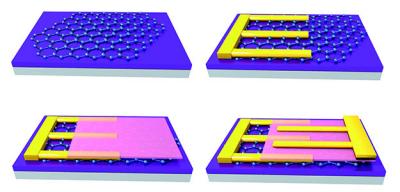Researchers from EPFL have reported the design of a tunable, graphene-based device that could significantly increase the speed and efficiency of wireless communication systems. Their system works at very high frequencies and is said to be delivering unprecedented results.

Current portable wireless systems usually come equipped with reconfigurable circuits that can adjust the antenna to transmit and receive data in the various frequency bands. Unfortunately, currently available technologies like MEMS and MOS that use silicon or metal do not work well at high frequencies - where data can travel much faster. For this end, the EPFL researchers have come up with a tunable graphene-based solution that enables circuits to operate at both low and high frequencies with unprecedented efficiency.
The EPFL researchers overcame these obstacles with a graphene-based capacitor that is compatible with traditional circuits. The device consumes very little energy and, above 2.1 GHz, easily outperforms its competitors and has a miniaturized design. "The surface area of a conventional MEMS system would have to be a thousand times greater to get the capacitance value," said the team.
The researchers' breakthrough is based on a clever sandwich structure that calls graphene's unique characteristics into action. The sandwich-shaped structure takes advantage of the fact that a two-dimensional gas of electrons in a quantum well can behave like a quantum capacitance. This is because it follows the Pauli Exclusion Principle, according to which a certain amount of energy is needed to fill a quantum well with electrons. Quantum capacitance can be easily measured in a single-atom layer of graphene, and the key advantage is that it is tunable by varying the charge density in graphene with a very low voltage.
The EPFL researchers' device, which is only several hundred micrometers (around 0.05 cm) long and wide, can be stiff or flexible, is easily miniaturized, and uses very little energy. Potential applications are numerous. In addition to improving the flow of data between connected devices, it could extend battery life and lead to ever more compact devices. In its flexible state, it could be easily used in sensors placed in clothes or directly on the human body. The researchers see the end technology as a hybrid in which graphene will be paired with advanced silicon technologies.